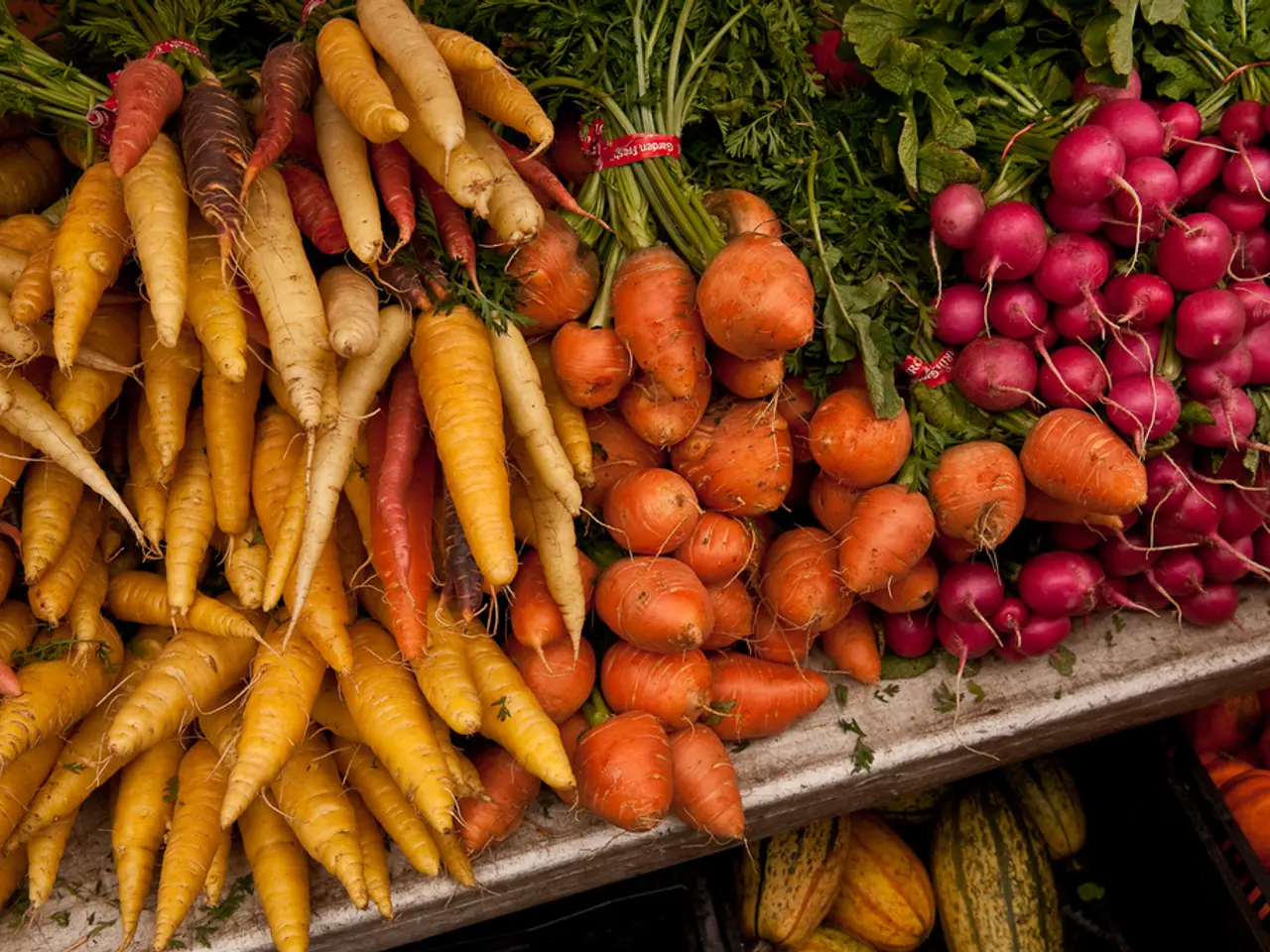Home Vegetable Garden Cover Crops: Growing the Right Plants for Optimal Soil Health
In the world of sustainable gardening, cover crops have become a valuable ally for home gardeners. These crops, directly seeded in the garden, offer numerous benefits for both the soil and the garden's overall health.
Understanding the timing and duration of cover crops is crucial. Some species thrive in cool weather, while others perform best in summer heat. Most home gardeners should utilise cover crops in the fall after the last harvest, in summer between cool-season crops, or for an entire growing season.
The choice of cover crop species depends on your specific goals. Grasses, such as oats and ryegrass, provide quick biomass and help prevent erosion. Legumes, like clover and hairy vetch, fix nitrogen, enriching soil fertility naturally. Broadleaf plants, such as buckwheat and daikon radish, improve soil structure and compete with weeds; daikon radish also helps break soil compaction. Brassicas, such as mustards and daikon radish, help suppress soil pests and alleviate soil compaction.
A typical mix for small home gardens might be about 85% oat grass combined with some buckwheat, clover, and possibly phacelia for pollinator attraction. This mix balances fast ground cover, nitrogen fixation, weed suppression, and ecological benefits.
For optimal nitrogen fixation, legumes should be inoculated with the correct bacteria. Planting cover crops in rotation or as relay cropping can also maximise soil benefits without compromising vegetable production. Brassicas also act as biofumigants to suppress soil-borne pests, beneficial for vegetable gardens.
Proper termination of cover crops is essential to receive all their benefits. This should be done 2 to 3 weeks before planting the vegetable crop. In fall, cover crops should be planted from late August through early October and terminated 2-3 weeks before planting vegetables, typically between late March and late April. In spring, the use of cover crops is not recommended for home gardeners unless they are experienced with managing and terminating them.
Cover crop mixtures are often more effective than planting a single species, combining the benefits of grasses, broadleaves, legumes, and brassicas. Planting a cover crop for the entire growing season is beneficial if pests, disease, or fertility issues arise.
Cover crops generally thrive in the same conditions that are ideal for vegetables - full sun and well-drained soils. However, they do differ in their tolerance to certain environmental conditions. For example, selecting drought-tolerant sorghum-sudangrass would be beneficial in dry conditions.
Several companies provide seeds and seed mixes for home gardeners, including Green Cover Seeds, High Mowing Organic, Hudson Valley Seed, Johnny's Selected Seeds, J.W. Jung Seed Co., Nichols Garden Nursery, Park Seed Company, Prairie Moon Nursery, Renee's Garden, Sow True Seed, Territorial Seed Company, and True Leaf Market.
In summary, mixtures of oats, clover, buckwheat, and daikon radish provide an excellent blend for home vegetable gardens, delivering nitrogen, biomass, soil improvement, pest control, and ecological benefits. With proper management and termination, these cover crops can significantly improve the health and productivity of your home vegetable garden.
- Incorporating cover crops like oats, clover, buckwheat, and daikon radish in home-and-garden settings can offer numerous benefits, such as improving soil structure, fixing nitrogen, and aiding in pest control.
- Legumes, such as clover and hairy vetch, should be inoculated with the correct bacteria for optimal nitrogen fixation.
- Mixtures of grasses, broadleaves, legumes, and brassicas can be more effective than planting a single species, as they combine the benefits of each plant type.
- Proper termination of cover crops is essential to receive all their benefits and to prepare the soil for vegetable planting.
- When dealing with dry soil conditions, drought-tolerant cover crops like sorghum-sudangrass can be a valuable addition to home-and-garden cover crop mixtures.




